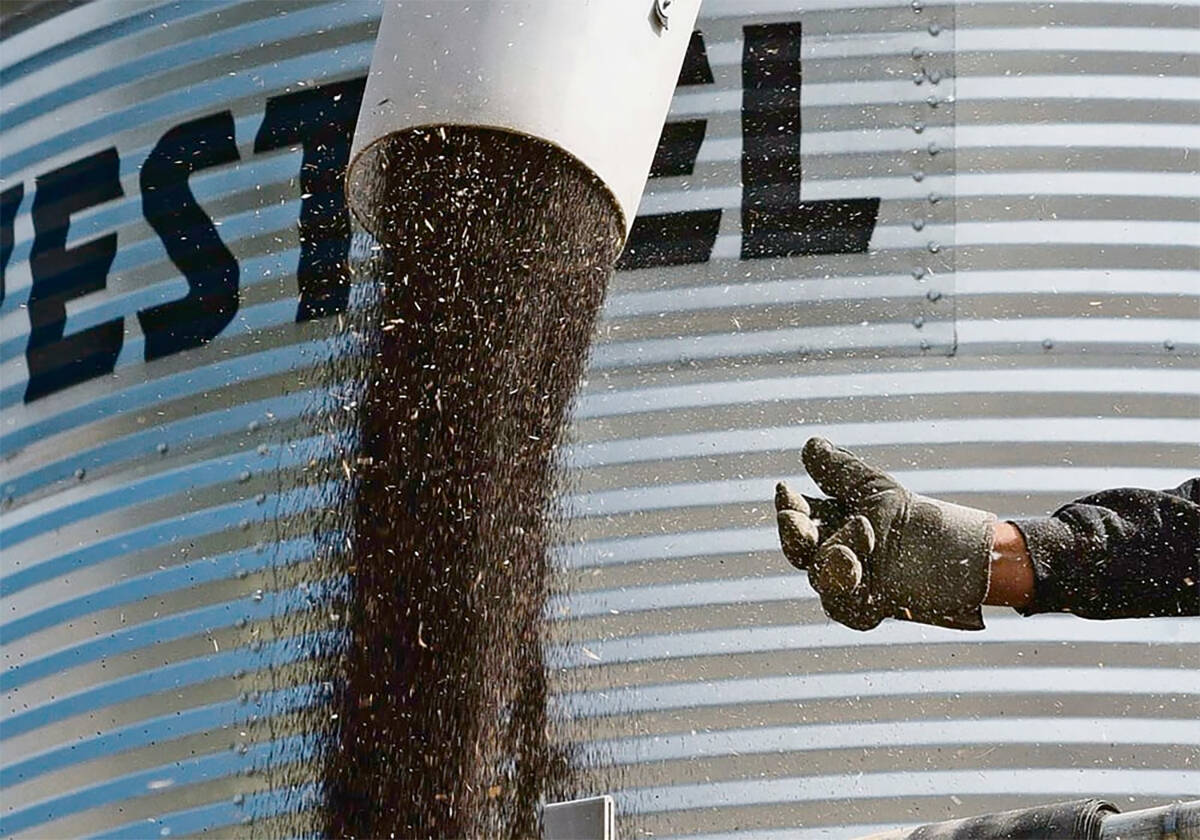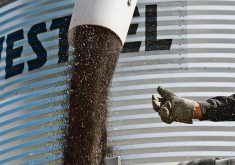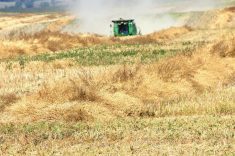Farmers loading producer cars this year will have to watch their weight.
That doesn’t mean they’ll have to cut back on doughnuts or ice cream, although that’s never a bad idea.
It means they’ll have to make sure they’re loading their rail cars to the maximum allowable level.
As of Aug. 1, both national railways are quoting all grain freight rates on a dollars-per-car basis, rather than the traditional dollars per tonne.
Since producer car shippers, and all shippers for that matter, will be paying a rate based on a fully loaded car, if they load below the maximum they’ll be throwing away money.
Read Also

Farmers urged to be grain-safe this fall
Working around grain bins comes with risk, from farmers falling to drowning in grain: Experts have five tips to help avoid grain-related accidents this harvest.
“The incentive under a per-car system is to load your car to the maximum, for sure,” said Rick Steinke of the Canadian Wheat Board.
Weight varies
The maximum weight varies according to the density of the grain being shipped.
For example, the maximum for a standard hopper car on Canadian National Railway will be 90 tonnes for wheat, 80 tonnes for barley and 75 tonnes for oats.
There may be some slight variations between railways; for wheat, Canadian Pacific Railway’s maximum is 91 tonnes.
CN introduced the per-car rates on non-board grains in August 2006 and expanded it to board grains this year. CP implemented it for all grains this year.
Railway officials say most other commodities have been priced on a per-car basis for years.
They also say it will make the handling and transportation system more efficient.
“We believe the change will encourage more complete loading of hopper cars, which will help improve the efficiency of grain movement to the ports,” said Kevin Franchuk of CN.
Mark Hemmes of the federal grain monitor Quorum Corp. said the new system has potential to infuse more discipline into the system.
“If you pay on a per-car basis, the tendency to under load and under utilize equipment will be much less,” he said.
Paul Beingessner, a Truax, Sask., farmer with long experience in rail issues, said he expects most producer car shippers will be able to adjust and load their cars to the maximum, even if they don’t have access to a scale.
“Most can estimate quite closely by eyeballing the hopper car,” he said. “If you’ve loaded a few and pay attention, you can be pretty accurate.”
Steinke said the board will convert the per-car rate to a per-tonne figure for the purpose of cash tickets and other communications with farmers.
Meanwhile, farmers will also notice an increase in the freight bills this crop year, particularly for special crops.
Rates for those crops will be up by four to five percent, while the overall increase for most cereal and oilseeds will be around one percent.
For example, the new single car rate for shipping wheat from Moose Jaw to Vancouver works out to $41.10 per tonne, up from $40.70.
However, industry officials say average rates are less significant than they were a decade ago. Under the revenue cap system introduced in 2000, the railways are free to adjust rates up or down throughout the year as long as they end the crop year under the cap.














